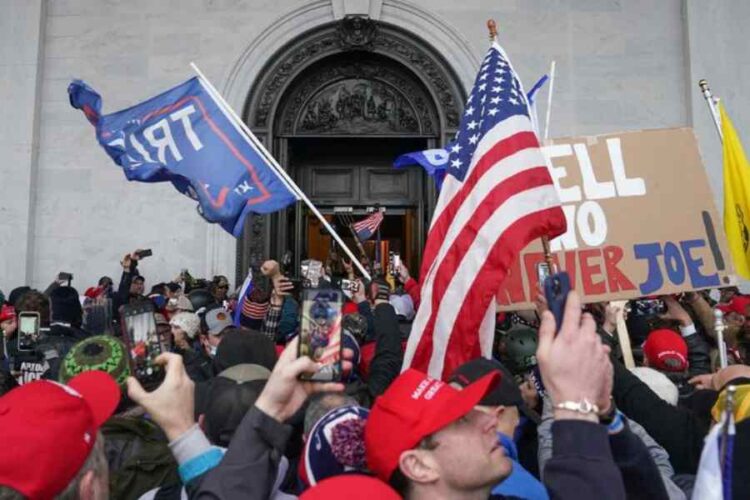In a pivotal session on Tuesday, the Supreme Court showcased a divided stance concerning the federal government’s prosecution of hundreds of alleged participants in the January 6, 2021, Capitol riot. The crux of the matter revolves around whether the charges of felony obstruction were appropriately applied and if the interpretation of a financial crimes law could potentially impinge upon political protests.
The case, spearheaded by a former Pennsylvania police officer implicated in the events of January 6, carries significant weight as it could potentially overturn the convictions and sentences of over 300 defendants.
Moreover, it holds implications for the legal challenges faced by former President Donald Trump, with the possibility of nullifying two out of four charges brought against him by special counsel Jack Smith.
At the heart of the debate in the case of Fischer v. United States lies the interpretation of the Sarbanes-Oxley Act of 2002, enacted post-Enron scandal to safeguard against the destruction of evidence in financial crimes.
The statute delineates criminality in altering, destroying, mutilating, or concealing records, documents, or other objects with the intent to impair an investigation. Additionally, it encompasses a catch-all provision encompassing conduct that “otherwise obstructs, influences, or impedes any official proceeding.”
Joseph Fischer’s defense, presented by attorney Jeffrey Green, vehemently argued against the application of this provision to his client’s actions.
Green contended that attempting to halt a vote count differs significantly from the direct manipulation or falsification of documents, the latter being the primary focus of the law. He emphasized that the statute’s essence lies in its impact on evidence pertinent to legal proceedings.
Contrarily, Solicitor General Elizabeth Prelogar representing the Biden administration, maintained a firm stance on the expansiveness of the statute, citing its clear textual implications. Prelogar asserted that the statute intended to encompass a broad array of obstructive actions, including those witnessed during the joint session of Congress on January 6, 2021.
Throughout the proceedings, the ideological divide within the Supreme Court became increasingly evident. Liberal justices appeared inclined towards a plain reading of the statute, asserting that the catch-all provision was intended to cover unforeseen circumstances not explicitly enumerated by Congress. Justice Elena Kagan remarked on the provision’s redundancy, implying its role as a backstop to capture conduct beyond the scope of explicit legislative delineations.
Conversely, conservative members of the court expressed skepticism, focusing on the absence of prosecutions under the same law for matters unrelated to financial or documentary crimes. Chief Justice John Roberts underscored the importance of interpreting the obstruction language within the context of preceding terms, emphasizing the specificity required in legal interpretation.
Justice Samuel Alito voiced concerns about the potential breadth of the statute’s application, questioning whether scenarios like the blockade of bridges leading to delays for congressional members would constitute a violation.
Prelogar’s response underscored the nuanced nature of the legal argument, highlighting the necessity of contextual analysis in determining statutory applicability.
Justice Amy Coney Barrett echoed Alito’s concerns, raising hypothetical scenarios where protestors aimed to impede proceedings without physically breaching the Capitol.
Barrett sought clarity on whether such actions would fall within the purview of the obstruction statute, underscoring the complexity of delineating obstructive conduct in a legal context.
Joseph Fischer, a participant in the “Save America” rally on January 6, faces prosecution for his alleged involvement in the breach of the Capitol during Congress’ certification of the 2020 election results.
The statute carries a maximum sentence of 20 years, though most defendants in the January 6 cases have received less severe penalties alongside additional charges.
The Supreme Court’s decision holds significant ramifications, with potential outcomes ranging from upholding lower court rulings affirming the government’s broad interpretation of the law to narrowing the scope of the obstruction statute in light of the events of January 6. As the nation awaits the court’s verdict, the legal landscape surrounding the Capitol riot and its aftermath remains fraught with uncertainty.










